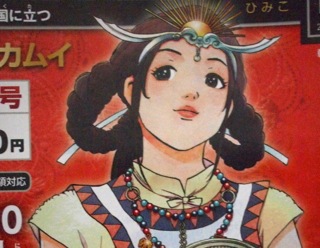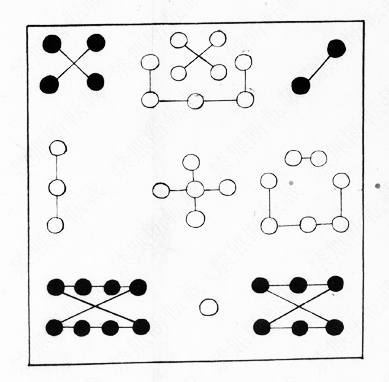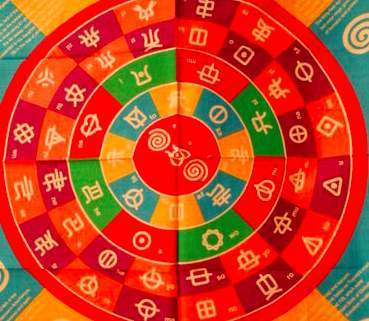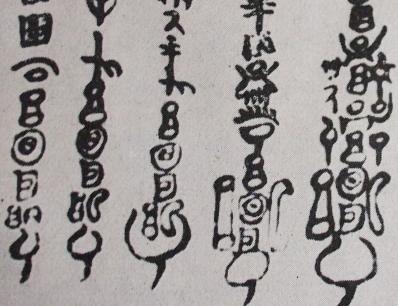[1] 仏教は宗教ではない, [2] やさしく自由に生きる智慧 Sumanasara
1 Buddhism
Buddhism
 Buddhism
Buddhism is not religion The complete science of what the Buddha taught (Japanese Edition)
3.8 out of 5 stars (21)
Kindle Edition
$3.32
2 The Wisdom for a free and loving life achieving happiness through cultivating a rational mind Buddhism is not religion (Japanese Edition)
The Wisdom for a free and loving life achieving happiness through cultivating a rational mind Buddhism is not religion (Japanese Edition)
4.4 out of 5 stars (4)
Kindle Edition
$3.54
Amazon.com: Customer reviews: [2] The Wisdom for a free and loving life achieving happiness through cultivating a rational mind Buddhism is not religion (Japanese Edition)
3.8 out of 5 stars (21)
Kindle Edition
$3.32
2
 The Wisdom for a free and loving life achieving happiness through cultivating a rational mind Buddhism is not religion (Japanese Edition)
The Wisdom for a free and loving life achieving happiness through cultivating a rational mind Buddhism is not religion (Japanese Edition)4.4 out of 5 stars (4)
Kindle Edition
$3.54
新書版『仏教は宗教ではない』はこちらです
→http://www.amazon.co.jp/dp/4908148007
仏教は宗教ではない ― お釈迦様が教えた完成された科学 (Evolving) Paperback Shinsho – October 30, 2014
by アルボムッレ スマナサーラ (著), イケダ ハヤト (著)
4.2 out of 5 stars 10 ratings
====
Top reviews from Japan
Translate all reviews to English
小上馬 昭彦
5.0 out of 5 stars 良かった。
Reviewed in Japan on September 11, 2019
Verified Purchase
良かった。
Helpful
Report abuse
Translate review to English
テイレン
5.0 out of 5 stars 一度読むべきな本
Reviewed in Japan on February 19, 2017
Verified Purchase
とても読みやすい本です。
世の中の理不尽を悩まずに受け入れるようにさせてくれる本だと思います。
3 people found this helpful
Helpful
Report abuse
Translate review to English
リンタロー
5.0 out of 5 stars 「じゃあ、調べてみなさい」P150
Reviewed in Japan on January 4, 2015
Verified Purchase
お釈迦様が教えたことは科学であり、
・・・・それが「仏教」なんですね。
「あなたは自ら考えて判断しなさい」P199
「様々な法則を信仰することではなく、
理解することを推薦します」P201
・P170「日本を取り戻す」というキャッチフレーズについて
・P172「TPP『重要5項目は守ります』」について
・P107「校則」について
・P155「親切に『それは良くないですよ」と言ってあげれば済む話
・P174「国の仕事は何ですかね?」
・P54「残酷な食物連鎖」について
・P57「言葉は人間が『経験するもの』にラベルを貼っているんです」
・P41甲子園の土
などなど
イケダハヤト氏の素直な姿勢がこの対談の内容を深いものにしている。
慈しみを考え、理解し、納得したら実践する。
Read less
13 people found this helpful
Helpful
Report abuse
Translate review to English
もくぎょ
3.0 out of 5 stars 同意せざるを得ない内容でした。次はもっとページ数が多いものを期待して☆3つにしました。
Reviewed in Japan on November 12, 2015
Verified Purchase
仏教を科学として捉える考え方は新しいし面白いです。
私が特に共感したのは生きることは意味ではないという事です。
よく私達は○○をするために産まれてきたと意味付けをして使命感に駆られる事があります。
しかし、それは神様が決めた事ではなくて自分が勝手に決めたことであり、人生は自分で考えて創造して行くものだという事をこの本はよく教えてくれました。
故に過ち多き人生になってしまったりもするのですが、人生の課題には自らのエゴイズム(自我)をうまくコントロールして感情が生まれる瞬間に気付くことを知る。人生をエゴに支配されずに客観性を大事にしてニュートラル(中立的)な考え方を育むこと。これらは釈迦(師匠)の教えは物事の事実をあるがままに教えてくれていただけなのです。
8 people found this helpful
Helpful
Report abuse
Translate review to English
Salsa
1.0 out of 5 stars 内容は特にないよう
Reviewed in Japan on November 3, 2017
内容はいいがこのブロガーの人はいかに面白い記事を書くかしか考えていないし、対談の意味はない。仏教徒かどうかも怪しいが、読みやすく初心者向けのため星1つつけました。
One person found this helpful
Helpful
Report abuse
Translate review to English
星 飛雄馬
5.0 out of 5 stars 初めて仏教書を読むかたに最適の一冊
Reviewed in Japan on October 31, 2014
大人気ブロガーのイケダハヤト氏と、テーラワーダ仏教のスマナサーラ長老による対談本です。
現代日本の若者の代表として、まったく宗教、仏教といったものに対して予備的な知識や偏見を持たないイケダ氏は、宗教や仏教に関する疑問を率直にスマナサーラ長老にぶつけていきます。
そんなイケダ氏の疑問に対して仏教の合理性を説く、スマナサーラ長老。
プロブロガーであり、IT世代の申し子とも言えるイケダ氏には、そんな仏教のプラグマティックな面がとても魅力的に感じられるようです。
本書は、インタビュー構成を担当されている中田亜紀氏の能力が高いためか、他のスマナサーラ長老の対談本に比べても格段に読みやすく、明晰な内容となっています。
本書の後半で、人気者であるがゆえに、ネット上で誹謗中傷されるのが悩み、と語るイケダ氏に、スマナサーラ長老が明快なアドバイスを与えています。
「誰かも分からないところで「バカ」「死ね」とか言っている人は、鏡に向かって、自分に「バカ」「死ね」と言っているようなものです。
その人の精神状態が、鏡に映っている感じなんですね。
まともな人間の精神レベルではないんですよ」
なんと、智慧に満ち溢れたアドバイスでしょうか。
私も、日ごろからtwitterなどで、粗暴な言葉や、汚い言葉を使ってしまうことが多いので、今後は大いに戒めなければならないと襟を正されました。
初めて仏教の本を読む方、仏教をやさしく理解したい方におすすめの一冊です。
Read less
41 people found this helpful
Helpful
Report abuse
Translate review to English
blackstar
4.0 out of 5 stars 疑問を解くきっかけ
Reviewed in Japan on October 25, 2015
中国を経由して日本に入った仏教が本来のものと違っているとは何となく想像していたが、本書はその入門篇として初心者にも面白く読めた。
「仏教には祈りは必要ない」「人生には意味などない」などスマナサーラ長老の明快な発言で本来の仏教を理解する一助となった。同時に幾多の宗教が原因となって世界で紛争が起こっている昨今、最初の仏教がその解決の一つとなるのではないか。
日本は清潔で秩序だった国ではあるが、「一度転落すると不幸になる」「スリランカでは騙されたとしても他人に分け与える心がある」という発言は100%ではないが、幸せのあり方として考えさせられるものがある。
4 people found this helpful
==
===
Book 1
===
From other countries
いえろう577
5.0 out of 5 stars 後編を
Reviewed in Japan on June 29, 2014
Verified Purchase
そっこうポチリマシタ。
生きることに意味はない。ただ生まれただけ。面白いです。脳内のはなしで、心の葛藤をせつめいするくだりは、わかりやすいというかそう考えてるといいんだろうなーっとおもわせりところおおかったです。
3 people found this helpful
Report abuse
Translate review to English
星 飛雄馬
5.0 out of 5 stars 初めて仏教書を読むかたに最適の一冊
Reviewed in Japan on May 12, 2014
Verified Purchase
大人気ブロガーのイケダハヤト氏と、テーラワーダ仏教のスマナサーラ長老による対談本です。
現代日本の若者の代表として、まったく宗教、仏教といったものに対して予備的な知識や偏見を持たないイケダ氏が、宗教や仏教に関する疑問を率直にガンガンとスマナサーラ長老にぶつけていきます。
そんなイケダ氏の疑問に対して仏教の合理性を説く、スマナサーラ長老。
プロブロガーであり、IT世代の申し子とも言えるイケダ氏には、そんな仏教のプラグマティックな面がとても魅力的に感じられるようです。
本書は、対談の構成を担当されている方の能力が高いためか、他のスマナサーラ長老の対談本に比べても格段に読みやすく、明晰な内容となっています。
初めて仏教の本を読む方、仏教をやさしく理解したい方におすすめの一冊です。
この対談シリーズはまだ続くようですが、続巻が今から楽しみです。
8 people found this helpful
Report abuse
Translate review to English
クリス
5.0 out of 5 stars 宗教では無い、と分かれば仏道ファン増えますね。
Reviewed in Japan on May 15, 2014
Verified Purchase
仏道を一生の友、伴侶として生きます。
老師の論理は冴え渡ってます。
5 people found this helpful
Report abuse
Translate review to English
大石哲也
5.0 out of 5 stars 「仏教って何なの?」と聞かれたら手渡したい本
Reviewed in Japan on April 6, 2014
Verified Purchase
ある意味読む前に身構えてしまったのですが、それは全くの妄想でした。
ブッダを尊敬し、五戒を守り、冥想する。そんな生き方の理由がハッキリ示されている内容と思いました。
とくに宗教アレルギーのある方の誤解を解く問答が繰り広げられていて、読んでいて爽快でした。
後半もあるとのことで非常に楽しみです。
問題は手渡したい誰かが現れたとき、紙の本の様にいかないことでしょうか。(笑
8 people found this helpful
Report abuse
Translate review to English
なぞなぞ日本一☆近未来なぞなぞサイト【なぞQ】
5.0 out of 5 stars 正しい教え、正しい解釈
Reviewed in Japan on April 2, 2014
Verified Purchase
良い考え方をして、良い人間になるのが大切だなとシンプルに考えることができました。
そのために助けになるのが仏教、神的な存在でなくて、"教え"。
10 people found this helpful
Report abuse
Translate review to English
asato
5.0 out of 5 stars 痛快な逆説
Reviewed in Japan on April 8, 2014
Verified Purchase
師曰く、
日本ほど宗教に凝り固まっている国はない。日本人は何でも宗教にしてしまう。たとえば仕事。
仕事を宗教にすると、すごく生きづらいし、足が重くなる。仕事でも何でも、一つのゲームにすべき。
仕事は遊びであって、家にいるとつまらないから、会社に行って楽しくハチャメチャに頑張る。
その上、人の役にも立ち、お金も貰える。なおさら面白い。
ゲームという感覚で生きてみれば、失敗は極限に減らせる。ストレスも溜まらない。
・・・・・
何でも宗教にする(盲目的に崇め、隷属する)国にあって、仏教は宗教ではない。
宗教とは正反対に、「鎖を壊す方法」「自由独立の道」を教えている。
上記の考え方に触れて、自分から進んで鎖に絡め取られようとしていることを自覚した。
仏教は、自縄自縛の鎖を壊す道。盲目的な無知の状態から、理性を開発して目を開く道。
それにしても、
何とトラップの多い世の中であることか。何と愚かな我が身であることか。
32 people found this helpful
Report abuse
Translate review to English
ひでっち
1.0 out of 5 stars まるで新興宗教の宣伝小冊子のような内容
Reviewed in Japan on July 6, 2014
Verified Purchase
表紙からすると、アルボムッレスマナサーラさんとイケダハヤト君との対談のように見受けられます。
しかし、内容といえば全く対談の体を成していません。
またインタビューとしても同じことです。
スマナサーラさんが話した事に対してイケダ君が「はい」「なるほど」「おっしゃるとうりです」「〇〇なんですね」などの言葉ばかり。
完全肯定なことばと、「〇〇なんですね」のオーム返し。
まるで読んでいて、「太鼓持ち」か「イェスマン」にしか思えません。
非常に気持ち悪いです。
相手が相手だけに全く持ってイケダ君の力不足です。
いっそのことイケダ君の相槌が無い方が読みやすいです。
スマナサーラさんの言っていることは何を言おうが自由ですが、突飛なこととしか思えません。
「仏教は宗教でなくお釈迦様が創った完成された科学である。」と言ってるのですね。
この世にそうそう完成されたもの、完全なものなんてありません。
完全な物理法則でさえ次元が変われば異なってしまいます。
そこまえ言わなくても人間が関わるもので完全なものなどありません。
「仏教は完全」だなんて高慢もいいところでしょう。
「仏教は完全」と言っているところが不完全なように思えます。
変わるものは真理に達していない。
そして、宗教は毎日のように変化してしているという。
新たな宗派や新興宗教が誕生することをもって、伝統宗教を含む宗教全体が変化し続けている(不安定)と指摘している。
それに対しイケダ君は「はい。日々色々な宗教がうまれて、「教義」が生まれたり・・・」。
大丈夫かい?
新興宗教も伝統宗教も一緒くたにして宗教が毎日変化しているいう論理はおかしすぎるでしょう。
例えば、新興宗教が誕生するたびに、カトリックやイスラム教など伝統宗教の教義に変化があるのかい?
私は我々だけが正しい、他の宗教は全て間違っているという考え方は大嫌いです。
もし、天国やあの世があるならば、宗教は違った道筋で同じ所に向かって進むものだと考えています。
我々だけが正しい、我々だけが真理であり他のものは邪道であるということほど胡散臭いものはありません。
そして、スマナサーラさんがなんと言おうが外から見る限り言っている事はそれこそ完全な宗教です。
スマナサーラさんの言うことは為になることはあると思います。
イケダ君のコラムは面白いです。
しかし、この本は企画倒れで最低としか思えませんね。
それこそ新興宗教の宣伝小冊子のような内容です。
お二人のそれぞれの本を別々に読んだ方が楽しいでしょう。
55 people found this helpful
Report abuse
Translate review to English
====
===
Book 2
===
Customer reviews
4.4 out of 5 stars
4.4 out of 5
4 global ratings
5 star
45%
4 star
55%
3 star 0% (0%)
The Wisdom for a free and loving life achieving happiness through cultivating a rational mind Buddhism is not religion (Japanese Edition)
The Wisdom for a free and loving life achieving happiness through cultivating a rational mind Buddhism is not religion (Japanese Edition)
byAlubomulle Sumanasara
===
Translate all reviews to English
From the United States
There are 0 reviews and 0 ratings from the United States
From other countries
asato
5.0 out of 5 stars 世界はニュートラル
Reviewed in Japan on April 29, 2014
--
本文中、他人から誹謗中傷を受けた時の対応法について、Dr.スマナサーラが慈悲という処方箋を出している。
でも本当は、「私は怒らない」と決意すれば、それで済むことかもしれない。
後半に「人は自由である」というトピックがあるが、怒るのもその人の自由、怒らないのもその人の自由だから。理論的にはそうなる。
そうは言ってもなかなか・・・というところで、「自我」の問題が立ち現れる。
本来世界はニュートラルなのに、自我に起因する感情が生き方を偏らせる。
それに抗ってニュートラルな場所に立とうとする努力、これが「中道」の生き方だろう。
その第一歩は、「自分の頭で考えること」だと師は教える。
生という不完全な土台を修理する道と、
生という土台が不完全であることを放置して、死ぬまで踊り続ける道。
どちらの道を選択するかは、まさに各々の自由だ。
6 people found this helpful
==
===









